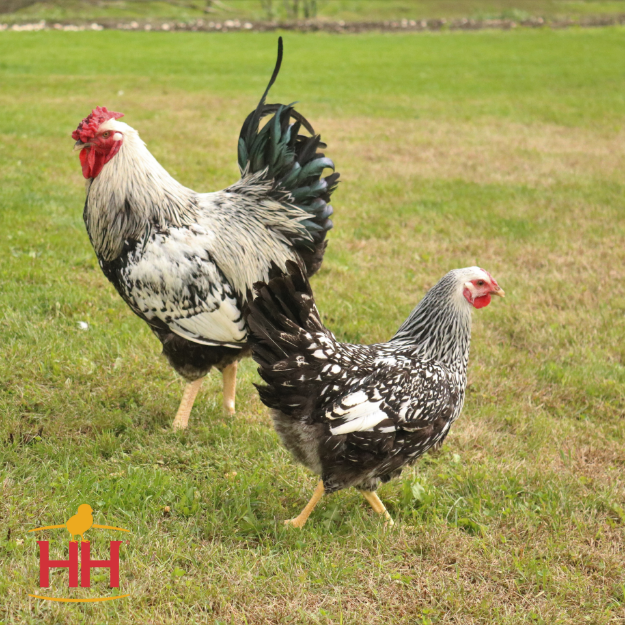
History of the Wyandotte Chicken
The Wyandotte chicken breed was developed in the United States in the late 1800s. They were named after the Wyandotte Native American tribe and created by crossing several breeds, including the Dark Brahma and Silver Spangled Hamburg.
The goal? To produce a hardy, cold-resistant bird that could provide both eggs and meat. Mission accomplished! The American Poultry Association officially recognized Wyandottes in 1883, and they’ve been backyard favorites ever since.
Egg Production & Purpose
Wyandottes are considered a dual-purpose breed, valued for both eggs and meat. On average, hens lay around 150-200 medium-to-large brown eggs per year. That’s steady production for families who want a reliable layer.
Their size also makes them a good meat bird, with roosters weighing about 8.5 pounds and hens about 6.5 pounds.

Varieties of Wyandotte Chickens
One of the most-loved features of the Wyandotte is its feathering. The laced pattern, especially in the Silver-Laced variety, is absolutely stunning in the backyard!
Common Wyandotte varieties include:
-
Silver Laced
-
Golden Laced
-
Blue
Less common, but still beautiful, varieties include Buff, White, Partridge and Black.
My girls were Silver-Laced, and were strikingly beautiful with their red rose combs and crisp black-and-white lacing.
Temperament & Personality
Wyandottes are generally described as friendly, calm, and docile, making them a great choice for beginners and families with children. They’re usually good with other chickens, though like mine, some can take a spot high on the pecking order.
Cold-Hardy Backyard Birds
If you live in a cold climate like I do here in Minnesota, Wyandottes are a smart choice. Their rose combs are less prone to frostbite, and their dense feathering helps them stay warm through long winters.
Until next time,
-The Wing Lady